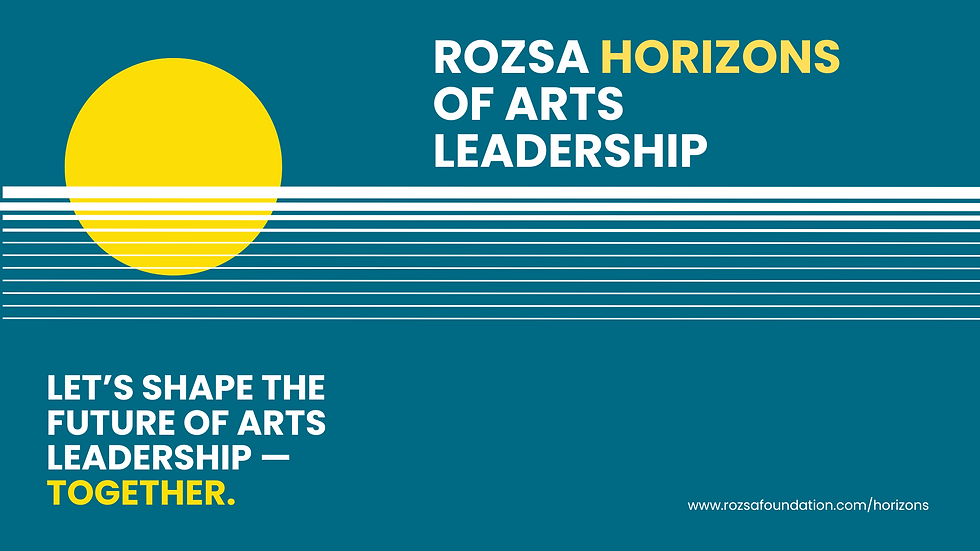5 Big Ideas about Equity
- Rozsa Foundation
- May 9, 2019
- 3 min read
Updated: Mar 30, 2021
Presented by Melissa Tuplin and Sue Scott

5 Big Ideas about Equity - Presented by Sue Scott & Melissa Tuplin
While professional arts systems such as artist unions and funding bodies are not intentionally inequitable, there is a lack of diverse representation in the Calgary/Mohkintsis demographics. The design of these systems is preventing some artists and groups from accessing funding and other opportunities.
Through Sue’s work as a staff member of a small indigenous arts organization, and Melissa’s work as a municipal granting officer, their Big Ideas exist as a call to action for professional arts organizations to recognize their leadership at a sector-wide level, and to practice participatory, consultative approaches to addressing this complex issue.
Complex Issue
Systems and standards such as grant processes and equity agreements are important for elevating and professionalizing the operations of arts organizations as well as ensuring that artists are respected, safe, and well paid. However, the Eurocentric colonial design models of these systems exclude the voices, needs, and ways of knowing that are unique to equity-seeking, marginalized, and diverse peoples, and create barriers to even access or see themselves within an ecosystem of professional artists and arts organizations, and in fact force these artists to measure themselves against those with privilege. Without addressing the systemic inequities and barriers embedded in arts-professionals’ systems, the arts sector will continue to privilege arts organizations and artists working in traditional Eurocentric forms of creation and operations.
5 Big Ideas
1. Adaptability: The professional arts systems must recognize that a one-size-fits-all design fits well with the dominant culture yet creates inequality for groups that do not fit that design. Grant applications, equity pay schedules, standard contracts, and other processes and policies would benefit from flexible and adaptable ‘modules’, ‘schedules’, or alternate entry points that reflect the varying requirements of diverse artists and organizations.
2. Transparency: A fundamental part of equitable practice is transparency in all aspects of the system. Organizations should have an outward facing Equity Statement and Accessibility. Accommodation statement. Publishing case studies, stories, or specific examples of how the organization has provided accommodations, developed relationships, or reflected on and implemented feedback demonstrates active, willing, and thoughtful commitment to their policies. This builds trust in relationships and opens the door for further equity interventions.
3. Representation: We ask the management of professional arts systems to consider how a variety of voices could be represented, whether through diverse representation on staff and board, or active consultation and relationships with diverse groups. This is not about hiring quotas or tokenism, but a recognition of the value of the voice of ‘lived experience’ to identify gaps that others may not see, or to elevate the perspective of those outside the dominant culture.
4. Evaluation: Evaluation should be undertaken with the intent to take action on the results - consulting with equity seeking groups and then never making change or adjusting based on what you’ve learn degrades trust in the relationship. Evaluation should build trust with the communities you work for and with. Design, Evaluate, Take Action, Repeat!
5. Bravery: In conversation with our Wise Crowd cohort, it is clear that the underlying and most significant idea around complex issues of equity is the need for bravery. These are challenging, nuanced, and often uncomfortable conversations and ideas that require people to reflect on their place within their community groups, organizations, and society. This final call to action asks every individual within these systems to allow themselves to be in a place of discomfort, to open themselves up to hard conversations, and to recognize their own privileges, biases, and beliefs about the world.






Comments